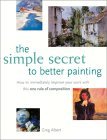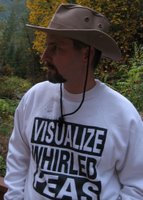Drawing on the Right Side of the Brain

Click to shop at Amazon
By Betty Edwards
First of all, you have to love the title if you have any love for double meanings. A recent Studio 360 on NPR called into question the validity of the whole stress of the right side vs. left. Artists certainly draw on both sides of their brains. I also personally believe the “right side” mode that Edwards describes is probably more likely the same state of mind as “Flow” proposed by psychologist Mihaly Csikszentmihalyi.
That said, the book is a classic in art instruction now. It has been revised since the original in 1979 with more examples of students’ before and after efforts. It is encouraging to see how much people improve through the course. Using negative space, training for line drawing, and learning common errors in drawing various subjects are highlights. There is also a nice companion practice guide that I have used.
Well, the science on the brain is interesting, but the exciting thing about this book is its well thought out teaching of drawing. As the NPR report says, there is no doubt that “A week of concentrated practice under the watchful eye of a seasoned instructor can really improve your drawing skills”.
Labels: classic, drawing, recommended


